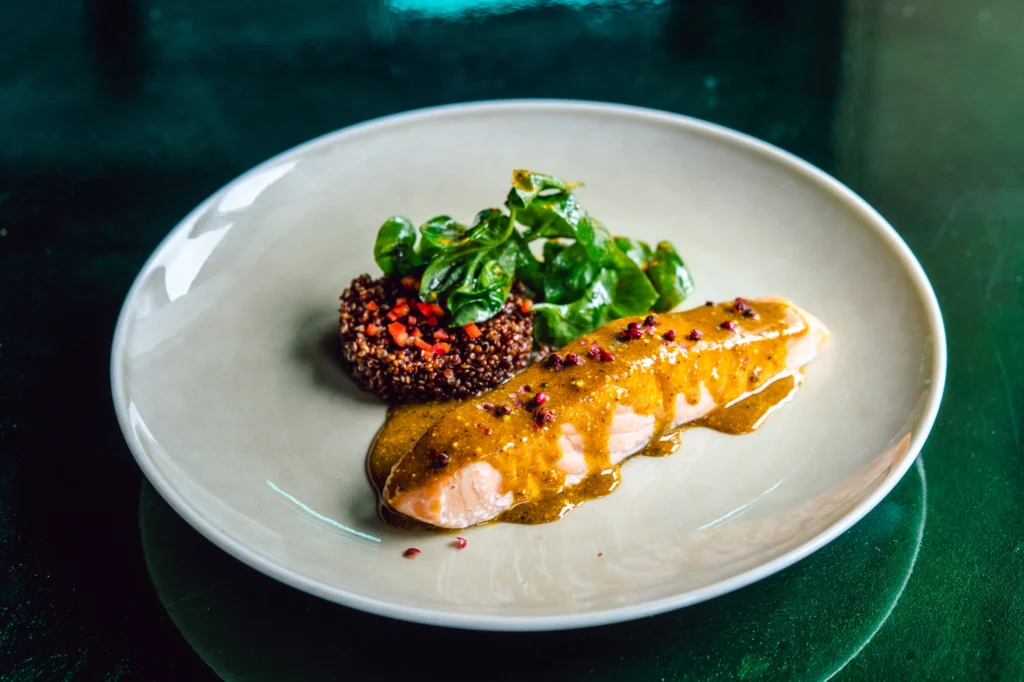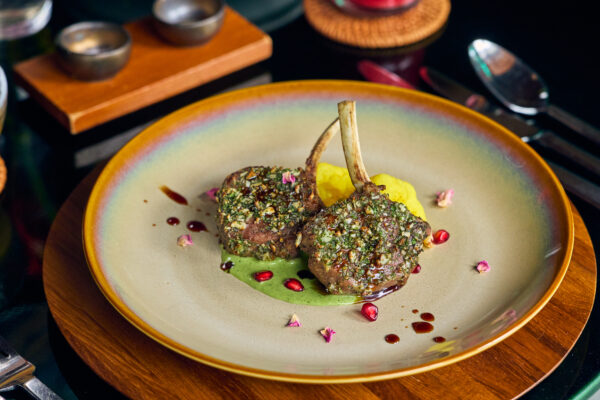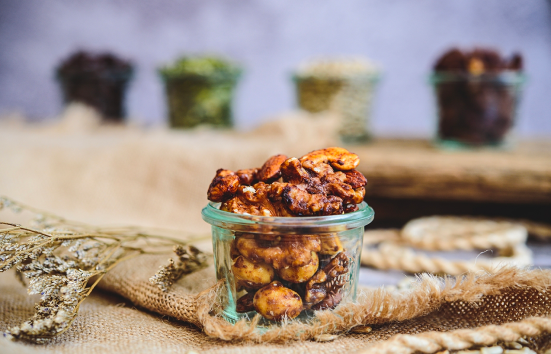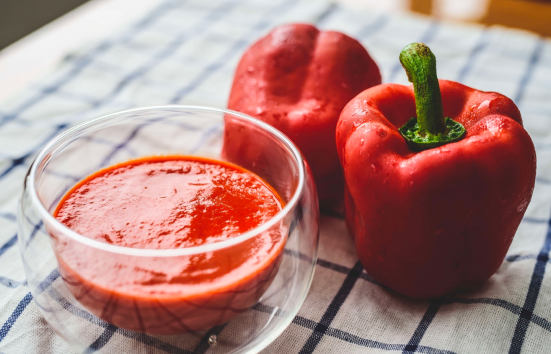Benefits of an anti-inflammatory diet and the best anti-inflammatory food to benefit your gut health and wellbeing.
Diet plays a critical role in regulating the body’s inflammatory responses and overall health. When the body’s immune system feels overloaded by dietary or food pattern triggers, it can cause a response that affects the way heal. Acute inflammation, for example, after a muscle strain or a bump on the head, is useful as a way to protect cells in the body, but long term low grade inflammation has the potential to lead to chronic conditions including metabolic changes that can affect the lining of blood vessels due to increases in blood sugar and fat. Processed food can alter the balance of gut bacteria, and those with dietary sensitivity may also encounter pro-inflammatory cytokines which are small proteins that signal cell communication.
Certain foods can exacerbate inflammation, while others have anti-inflammatory properties. By making informed dietary choices, individuals can improve their body’s ability to regulate inflammation and enhance their overall well-being.
Food That Can Cause Inflammation
Certain food has the potential to influence the body’s natural balance, accelerating the inflammatory process. These include:
- Sugar and refined carbohydrates, including white bread and pastries
- Deep-Fried food
- Sugar-sweetened beverages, including soda and fruit juice
- Processed meat, including salami and ham
- Synthesised and seed-oil based spreads, for example margarine
- Excessive consumption of animal-based fats including tallow and lard.
These products are often seen as bad for your health and can increase the risk of chronic illnesses like Type 2 Diabetes and Heart Disease. One of the key reasons behind this is inflammation. On top of that, unhealthy food can lead to weight gain, which is another trigger for inflammation. And it’s not just about the extra calories—some ingredients can cause inflammation on their own.
Top Food Items That Fight Inflammation and Enhance Well-being
On the flip side, plenty of natural produce can help reduce inflammation and lower your risk of chronic diseases. Eating an anti-inflammatory diet is all about following a healthy, balanced approach. Think fruit, veggies, nuts, whole grains, fish, and healthy oils, diets typically found within the Mediterranean.
Here are some specific ingredients that flight inflammation, and how they work.
- Mushrooms
Mushrooms are a powerful source of ergothioneine, an amino acid and antioxidant that helps prevent or slow cellular damage. Certain varieties like shiitake, oyster, lions’ mane, and king oyster have higher amounts, but any variety can lower the risk of cancer. Ergothioneine is actively transported into cells and concentrated in mitochondria, suggesting a specific role in protecting these components from oxidative damage.
Mushrooms also contain polyphenols, polysaccharides, vitamins, carotenoids, and minerals, all of which contribute to their significant antioxidant properties. These compounds protect against oxidative stress, which plays a role in ageing and chronic diseases.
Regular mushroom consumption may protect brain health and reduce the risk of mild cognitive impairment (MCI), a precursor to Alzheimer’s disease. A study in Singapore found that consuming more than two cups of mushrooms a week could lower the risk of MCI by 50%.
An easy way to introduce the benefits is to add some powders to your morning smoothie or overnight oats.
- Honey and Bee Pollen Mix
Both bee pollen and raw honey are also noted as good sources of antioxidants. Bee pollen is also rich in vitamins, minerals, amino acids, and enzymes that contribute to overall health. It has been shown to have anti-inflammatory properties and may help with allergies by desensitising the body to allergens.
Raw honey is known for its antibacterial and wound-healing properties. Its high sugar content helps create an osmotic effect, drawing moisture out of bacteria and killing them. This makes it effective in treating wounds and preventing infection.
In addition to their individual benefits, studies have shown that combining bee pollen and raw honey can enhance their therapeutic effects.
- Bone Broth
Studies suggest bone broth has protective effects against inflammatory conditions like ulcerative colitis. It can reduce levels of pro-inflammatory cytokines (IL-6, TNF-alpha) and increase anti-inflammatory ones (IL-4, interferon-gamma). This effect is linked to its histidine and glutamine content, with glutamine helping to reduce inflammation, particularly beneficial for gut inflammation issues.
Bone Broth is best enjoyed fresh, so we recommend seeking a source close to home or making it yourself. However, there are bone broth powders available that may be a practical alternative.
- Cacao Nibs
Just two 15-gram servings per day have been shown to reduce inflammation significantly, specifically lowering interleukin 1 beta and showing slight changes in master regulators of inflammation like NF-kappa B and NLRP3 inflammasome. Cacao nibs are also rich in fibre and dense with antioxidants. It is recommended to only consume Cacao Nibs in moderation.
- Green Banana Flour
This concentrated source of resistant starch acts as a powerful prebiotic fibre and has demonstrated significant anti-inflammatory effects. In a high-fat diet rodent model, it led to a massive reduction in inflammation related to adipose tissue and corrected hunger hormone feedback loops. It also induced a robust shift in the microbiome, reducing Firmicutes (associated with obesity) and increasing Bacteroidetes (associated with leanness).
Green Banana’s don’t taste great, so we recommend adding a small scoop of powder into your morning smoothie or juice.
- Black Garlic
This amazing product offers protection against inflammation by increasing nitric oxide and loweing prostagland in E2 in immune cells and suppressing COX-2 expression at a genetic level, leading to less inflammation. It is also potent at scavenging free radicals and protecting against shock from pathogenic inflammatory responses.
- Hemp Seeds
Packed with heart healthy, anti-inflammatory gamma-linolenic acid (GLA) and stearidonic acid (SDA), Hemp seeds are a great inclusion in a healthy, gut friendly diet. Proposed mechanisms include a microbiome shift and the presence of bioactive omega-3 lipids that impact the endocannabinoid system to modulate inflammation. Consume Hemp seeds in moderation.
- Blueberries
Most berries are high in antioxidants; however, the anthocyanins in blueberries have powerful antioxidant capabilities. Beyond direct scavenging, they stimulate the body’s own production of antioxidants, such as superoxide dismutase and catalase, which work to neutralise reactive oxygen species. This makes them a highly anti-inflammatory fruit.
- Probiotics
Probiotics play a pivotal role in maintaining harmony within the gut, serving as beneficial allies in the fight against inflammation. These live micro-organisms, often referred to as ‘good bacteria,’ help to restore balance to the gut microbiota, which is crucial for reducing inflammatory processes. By interacting with the cells of the gut lining, probiotics can enhance the production of short-chain fatty acids such as butyrate, which possess potent anti-inflammatory properties. Furthermore, they strengthen the intestinal barrier, reducing the likelihood of harmful bacteria and toxins entering the bloodstream. Incorporating probiotic-rich foods like natural yoghurt, kefir, or fermented vegetables into one’s diet can contribute to a more resilient gut environment, fostering both digestive health and broader systemic well-being.
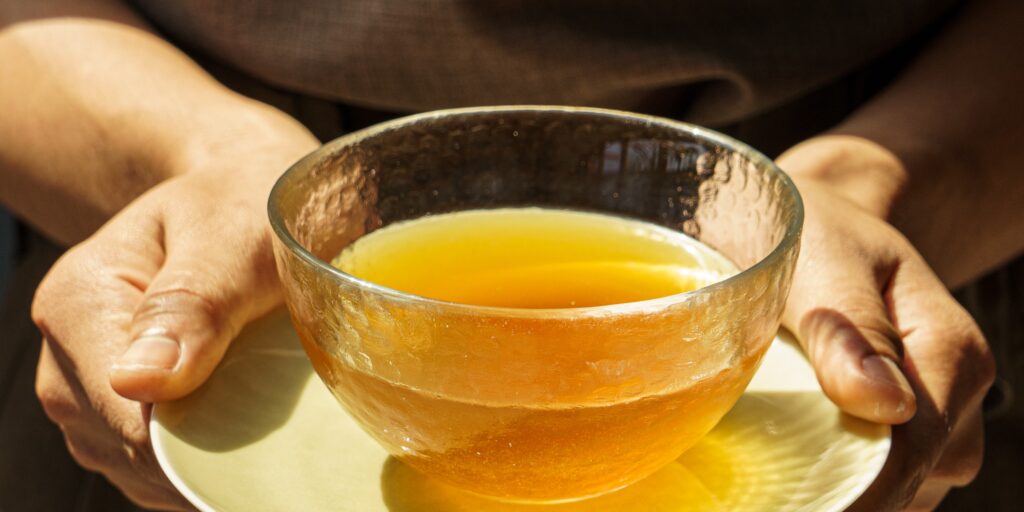
Chiva-Som Hua Hin Anti-Inflammatory Dining
Chiva-Som Hua Hin’s dining offerings are designed to facilitate maintaining an anti-inflammatory diet through their focus on whole, natural ingredients, the inclusion of fresh produce from their organic gardens, and specific menu options like their pescatarian menu. An anti-inflammatory diet aims to reduce inflammation in the body, which is linked to various chronic diseases such as heart disease, diabetes, and certain cancers. Key principles of such a diet involve prioritising produce rich in natural antioxidants, such as polyphenols, while limiting refined carbohydrates, deep-fried food, sugary beverages, and processed meats.
Here’s how Chiva-Som Hua Hin’s approach aligns with these principles:
- Emphasis on whole, natural, and locally sourced ingredients. Chiva-Som cuisine is delicious, nutritious and creative, with a focus on whole, natural ingredients, sourced locally as far as possible. This approach directly supports an anti-inflammatory diet, as a more natural, less processed diet is beneficial for reducing chronic inflammation and improving overall well-being.
- Organic Gardens for Fresh Produce: A significant aspect of Chiva-Som’s wellness cuisine concept is our certified organic gardens, where they grow a range of fruit, vegetables, herbs and other edible plants just a short distance from our kitchens. Fruit and vegetables, particularly green leafy vegetables like spinach, kale, and collards, as well as fruit such as strawberries, blueberries, cherries, and oranges, are highlighted as anti-inflammatory foods that are high in natural antioxidants and polyphenols.
- Pescatarian Menu at The Emerald Room: The Emerald Room offers a dedicated pescatarian menu. Fatty fish, including salmon, mackerel and tuna are specifically identified as anti-inflammatory foods. Including fish as a primary protein source aligns with anti-inflammatory dietary patterns, such as the Mediterranean diet, which is rich in fish.
By focusing on fresh, natural, and unprocessed ingredients Chiva-Som Hua Hin’s dining offerings provide a framework that directly supports and facilitates an anti-inflammatory diet for its guests.

Frequently Asked Questions about Anti-Inflammatory Foods
Q1: What are the general health benefits of incorporating mushrooms into one’s diet?
A1: Mushrooms offer numerous health benefits, providing a savoury flavour to meals without adding much fat, calories, or sodium. Research indicates they can:
- Decrease the risk of cancer by as much as 45% with daily consumption of just 18 grams, largely due to their content of ergothioneine, an amino acid and antioxidant.
- Lower sodium intake, as they are naturally low in sodium and can reduce the need for added salt.
- Promote lower cholesterol, with shiitake mushrooms, in particular, containing compounds that inhibit cholesterol production and absorption.
- Protect brain health, as studies have linked regular mushroom consumption to a reduced risk of mild cognitive impairment (MCI).
- Provide a source of vitamin D, being the only type of produce that offers this nutrient. Their vitamin D content can increase significantly when exposed to UV light or sunlight.
- Stimulate a healthier gut by acting as prebiotics, encouraging the growth of healthy bacteria through their abundant polysaccharides.
- Support a healthy immune system through nutrients like selenium, vitamin D, and vitamin B6.
Q2: How do edible mushrooms exert their antioxidant effects?
A2: Edible mushrooms possess significant antioxidant properties due to various bioactive compounds found in their fruit bodies, mycelium, and broth, including polyphenols (such as phenolic acids and flavonoids), polysaccharides, vitamins (C, E, A/carotenoids, D, and ergothioneine), and minerals (like selenium, zinc, copper, and manganese). These antioxidants work through multiple mechanisms:
- Scavenging free radical species (like reactive oxygen species – ROS) and preventing oxidative damage to lipids, proteins, and DNA at a cellular level.
- Chelating trace metal ions (such as iron and copper) involved in reactive species formation.
- Inhibiting enzymes involved in ROS production, like xanthine oxidase and lipoxygenases.
- Promoting endogenous antioxidant capacity by stimulating the synthesis and activity of the body’s own antioxidant enzymes, including superoxide dismutase (SOD), catalase (CAT), and glutathione peroxidase (GPx).
- Protecting cell membranes from lipid peroxidation. Mushrooms are a primary dietary source of ergothioneine, an unusual sulphur-containing derivative of histidine, which is actively transported into cells and specifically protects mitochondrial components from oxidative damage associated with ROS generation.
Q3: What defines an anti-inflammatory diet and what foods should be included?
A3: An anti-inflammatory diet is an eating pattern designed to reduce chronic inflammation in the body, which is a key factor in various major diseases including cancer, heart disease, diabetes, arthritis, depression, and Alzheimer’s. This diet prioritises foods rich in natural antioxidants and polyphenols, which are protective compounds found in plants. Foods recommended for an anti-inflammatory diet include:
- Olive oil
- Green leafy vegetables, such as spinach, kale, and collards
- Nuts, like almonds and walnuts
- Fatty fish, such as salmon, mackerel, tuna, and sardines
- Fruits, including strawberries, blueberries, cherries, and oranges
- Coffee (in moderation), which contains polyphenols and other anti-inflammatory compounds. Adopting an overall healthy diet that is more natural and less processed is crucial for reducing chronic inflammation and improving overall well-being and mood. The Mediterranean diet is cited as an excellent example of an eating plan that aligns with anti-inflammatory principles, being rich in fruits, vegetables, nuts, whole grains, fish, and healthy oils.
Q4: Which foods should be limited or avoided in an anti-inflammatory diet?
A4: To effectively reduce inflammation, it is recommended to avoid or significantly limit certain foods that are generally considered unhealthy and are linked to increased inflammation and chronic diseases:
- Refined carbohydrates, such as white bread and pastries.
- French fries and other fried foods.
- Soda and other sugar-sweetened beverages.
- Red meat (e.g., burgers, steaks) and processed meat (e.g., hot dogs, sausage).
- Margarine, shortening, and lard. These foods not only contribute to inflammation but also to weight gain, which is an additional risk factor for inflammatory conditions.
Q5: What is Lion’s Mane mushroom and what are its key health benefits?
A5: Hericium erinaceus, popularly known as Lion’s Mane mushroom, is a distinctive medicinal fungus characterised by its unique appearance with long, white, hanging spines. It is highly regarded for its rich composition of bioactive compounds and diverse health-promoting properties. Its key health benefits include:
Neuroprotective properties: It is known to enhance cognitive function, improve memory and concentration, and protect against neurodegenerative diseases like Alzheimer’s (AD) and Parkinson’s (PD) by stimulating the synthesis of Nerve Growth Factor (NGF). Clinical trials have shown improvements in cognitive performance and reduction in neuropsychiatric symptoms in individuals with mild cognitive impairment or early-stage Alzheimer’s.
Anti-inflammatory activity: Its bioactive compounds effectively modulate key inflammatory pathways, regulating cytokine production, reducing oxidative stress, and balancing gut microbiota, thereby combating chronic inflammation.
Antioxidant potential: Lion’s Mane contains compounds that actively scavenge reactive oxygen species (ROS) and induce the body’s own antioxidant enzymes, helping to prevent cellular damage and combat aging-related diseases.
Antimicrobial activity: It demonstrates significant potential against various bacterial and fungal pathogens by disrupting microbial cell membranes, inhibiting biofilm formation, and modulating host immune responses. It has shown activity against Helicobacter pylori and Staphylococcus aureus.
Gastrointestinal health: Its prebiotic polysaccharides promote beneficial gut bacteria and gut integrity. It may also aid in the prevention and treatment of gastric ulcers and inflammatory bowel diseases (IBD).
Mood regulation: Some clinical evidence suggests it can help alleviate symptoms of anxiety and depression.
Q6: What are the primary bioactive compounds in Lion’s Mane mushroom responsible for its effects?
A6: The wide array of health benefits attributed to Lion’s Mane mushroom stems from its diverse and potent bioactive chemical composition:
Polysaccharides: Notably β-glucans, which are complex carbohydrates primarily known for their immunomodulatory, antimicrobial, and antitumor effects. They activate immune cells like macrophages and T lymphocytes, enhance the body’s defence against infections, and act as prebiotics to support gut health and reduce oxidative stress.
Terpenoids: These include two key groups: hericenones, found in the fruiting body, and erinacines, predominantly found in the mycelium. These compounds are crucial for their neuroregenerative and neuroprotective properties as they stimulate the synthesis of Nerve Growth Factor (NGF), which is vital for neuronal growth, maintenance, and survival. Erinacines are particularly notable for their ability to cross the blood-brain barrier. Both hericenones and erinacines also exhibit anti-inflammatory and antimicrobial properties.
Phenolic compounds: Such as gallic acid, caffeic acid, and p-coumaric acid, which contribute significantly to the mushroom’s strong antioxidant capacity by scavenging reactive oxygen species and inducing endogenous antioxidant enzymes.
Ergothioneine: A histidine-derived amino acid with potent antioxidant properties. It is actively transported into cells via a specific transporter (OCTN1) and plays a unique role in protecting mitochondrial components from oxidative damage, with implications for preventing neurodegenerative diseases.
Bioactive proteins: Including lectins, glucanases, chitinases, laccases, peroxidases, and ribosome-inactivating proteins, which contribute to immunomodulatory and antimicrobial activities. Lion’s Mane also provides essential nutrients such as B vitamins (B1, B2, B3, B5, B6), vitamin D precursors, and minerals like selenium and zinc.
Q7: What are the health benefits of honey and bee pollen?
A7: Both honey and bee pollen have a long history of medicinal use and offer several proven health benefits:
Rich in antioxidants: They contain plant chemicals and other compounds that are good sources of antioxidants, which can reduce the risk of chronic illnesses such as heart disease and gastro-intestinal diseases. Raw honey, in particular, is composed of bee pollen, bee propolis (a compound from tree sap), and numerous antioxidants.
Natural antibacterial and antifungal properties: Honey naturally contains antiseptic hydrogen peroxide, giving it the ability to kill harmful bacteria and fungi. Its acidity also helps release oxygen from a wound, promoting healing.
Wound healing agent: Depending on its specific properties, honey can boost healing time and reduce infection when applied to minor cuts or burns. Manuka honey, for example, is often used for this purpose. Even processed honey, despite having less nutritional value due to pasteurisation, retains healthful compounds like antioxidants, amino acids, and vitamins. Research suggests that honey, even raw honey with its sugar content, can be a healthier alternative to table sugar. However, individuals with bee allergies should avoid these products, and it’s advisable to consult a healthcare provider before making significant dietary changes.
Q8: How does Chiva-Som Hua Hin’s dining facilitate maintaining an anti-inflammatory diet?
A8: Chiva-Som Hua Hin’s dining offerings are thoughtfully designed to support guests in maintaining an anti-inflammatory diet through several core principles:
Emphasis on Whole, Natural, and Locally Sourced Ingredients: Their cuisine prioritises “delicious, nutritious and creative” dishes made from “whole, natural ingredients, sourced locally as far as we can”. This aligns directly with anti-inflammatory dietary guidelines that advocate for unprocessed foods to help reduce chronic inflammation and improve overall well-being.
Fresh Produce from Certified Organic Gardens: A pivotal aspect of their wellness cuisine concept is their certified organic gardens, which provide a direct and fresh supply of “fruits, vegetables, herbs and other edible plants” to their kitchens. Guests are welcome to visit these gardens and learn from chefs about the nutritional value of seasonal produce. This access to fresh, antioxidant-rich fruits and vegetables is fundamental to combating inflammation.
Dedicated Pescatarian Menu: The Emerald Room, one of the resort’s dining venues, offers a “dedicated pescatarian menu”. The inclusion of fatty fish, such as salmon, mackerel, tuna, and sardines, is a key recommendation for an anti-inflammatory diet, mirroring patterns like the Mediterranean diet, which are known for their health benefits.



